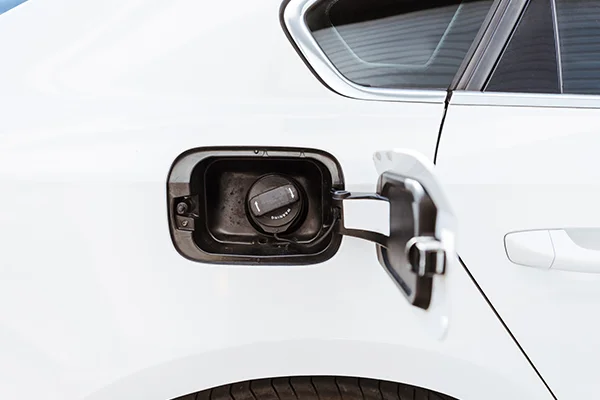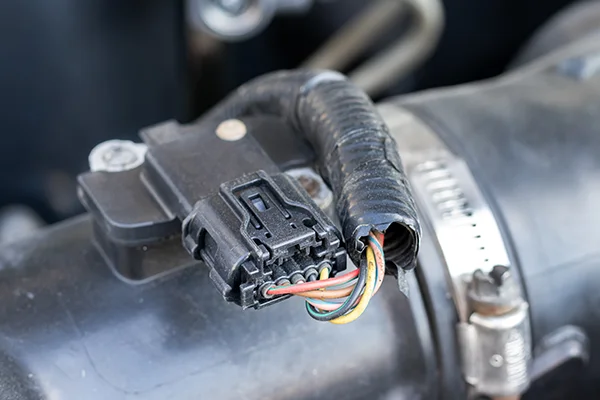Common Causes of Check Engine Light
Noticing that infamous orange light on your dash can be a worrying sight, as it could be warning you of a number of potential issues in your powertrain. While check engine light codes provide a great ballpark estimate of the issue’s location, the true source of the problem often cannot be pinpointed without further inspection and diagnostics.
In this article, we’ll cover some of the most common causes of an active check engine light, how it may affect your vehicle, and what steps you should take next to address the issue and prevent further damage.
What Is The Check Engine Light
Modern vehicles employ an array of warning lights on the dashboard to alert the driver of problems or malfunctions in the different systems of the vehicle, such as the brake warning light or battery warning light.
In the case of the check engine light, most codes you might experience relate to the engine and powertrain of the vehicle. As the engine is such a critical system within your vehicle, you can probably imagine why addressing check engine light concerns as soon as possible is important for keeping your vehicle running as it should.
Common Causes of Check Engine Light
Loose/Faulty Gas Cap
One of the most common sources of a check engine light is a loose or faulty gas cap. Your vehicle’s evaporative emissions (EVAP) system relies on an airtight seal throughout to ensure fuel fumes are unable to leak into the atmosphere. EVAP systems are responsible for capturing fuel fumes and returning them to the combustion chambers to be ignited with the rest of the fuel.
Faulty components such as a loose or damaged gas cap may allow for fumes to exit the system, preventing proper operation and leading to a check engine light.

This also happens to be the easiest of these issues to fix, as it generally just requires tightening or replacing the gas cap. If you notice your vehicle has a damaged gas cap, it’s best to have it replaced as soon as possible to avoid EVAP issues and harmful fuel emissions.
Oxygen Sensor Issues
Your vehicle’s oxygen (O2) sensors are responsible for monitoring the oxygen content of the engine’s emissions, and by extension the air-fuel ratio within the combustion chambers. When a defective or dirty sensor prevents proper readings within the exhaust system, it will likely trigger a check engine light to warn you of the incorrect information. Improper readings may also be a result of exhaust leaks near the O2 sensors, allowing ambient air to enter the system and disrupt the sensor.
Oxygen sensor issues won’t just lead to a check engine light, it may also cause an incorrect air-fuel ratio, as the sensor’s readings are a critical piece of information for the vehicle’s computers to take into account when altering the ratio. An excess of fuel compared to air (rich condition), or the opposite (lean condition), can both cause inefficient engine operation, increased emissions, and further issues within your powertrain.
Dirty or Failed Spark Plugs
As the name implies, spark plugs have the task of producing the electric arc needed to ignite the air-fuel mixture within the cylinders on each of the engine’s combustion cycles. A faulty component, or debris buildup on the plug itself, in even a single cylinder may cause problems within your powertrain, including a misfire preventing one of your cylinders from firing.
If you suspect you have spark plug issues, it’s important to have your vehicle inspected by a trusted professional as soon as possible to prevent further issues and potential damage in your engine.
Faulty MAF/MAP Sensor
Modern vehicles generally use one of two types of sensors to monitor the airflow entering the engine, however, they go about this in two different ways. When either sensor experiences problems, it can prevent your ECU from reading the incoming volume of air properly, throwing off the air-fuel ratio of your engine and often resulting in efficient operation and reduced performance.

MAF (mass air flow) sensors are located just behind the vehicle’s airbox and read the airflow coming in from the intake itself. MAP (manifold absolute pressure) sensors are instead located within the intake manifold and read the air content by reading the manifold’s internal vacuum. Both sensors play vital roles in providing your ECU with the proper information, and issues in either will generally lead to similar symptoms.
Catalytic Converter Problems
Catalytic converters are the components of your exhaust system responsible for converting harmful exhaust compounds into less-harmful gasses, protecting the atmosphere and keeping your engine’s emissions clean enough to meet government standards.
The internal structure of catalytic converters consist of a rare earth metal honeycomb, typically metals such as palladium, platinum, and rhodium. Over time, this honeycomb material may begin to break down, shatter, or even blow through the tailpipe of the exhaust, rendering your catalytic converters unable to properly convert these dangerous emissions.
Not only will this increase emissions and prevent you from passing a smog test, it can also lead to a check engine light warning you of emissions system issues.
The performance of your catalytic converters are determined by the oxygen sensors we discussed earlier, which are usually located on or around the catalytic converters. For this reason, failed catalytic converters and failed O2 sensors may result in similar or identical symptoms and warning codes.
Check Engine Light Diagnostics in Carlsbad, CA
If you’re experiencing an active check engine light in your vehicle, don’t hesitate to bring your vehicle to the experts at Carlsbad Auto Service for top-notch diagnostic services. It’s never a good idea to let warning lights linger, as it could be warning you of a pressing issue in your vehicle that could lead to expensive damage down the line. Give us a call or schedule online today to secure your appointment with a friendly and experienced team!
